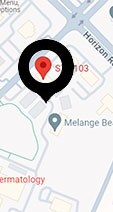Oocyte Preservation
Oocyte cryopreservation, also known as egg freezing, is the process where a woman's eggs (oocytes) are retrieved, frozen, and stored for future use. This technique allows women to preserve their fertility by storing high quality eggs which can later be used for in vitro fertilization (IVF) or other assisted reproductive technologies (ART). Oocyte cryopreservation has become increasingly popular for various reasons:
- Fertility Preservation: Oocyte cryopreservation is commonly used by women who wish to freeze their eggs and store them for later use. By freezing their eggs women can conserve their fertility and increase their chances of conceiving later in life, even as ovarian reserve declines with age.
- Medical Reasons: Oocyte cryopreservation can be used by women facing medical treatments, such as chemotherapy or radiation therapy, and those with underlying conditions such as endometriosis or premature ovarian insufficiency, which may affect their fertility. Freezing eggs can provide the opportunity to conserve reproductive options.
Here's an overview of the oocyte cryopreservation process:
- Ovarian Stimulation: Before egg retrieval, the woman undergoes ovarian stimulation with hormonal medications to encourage the ovaries to produce multiple eggs during a single menstrual cycle. This typically involves daily injections of follicle-stimulating hormone (FSH) and sometimes luteinizing hormone (LH) for about 8 to 14 days. Throughout this process, the woman's response to the medications is monitored through blood tests and ultrasound examinations.
- Egg Retrieval: Once the ovarian follicles have reached the appropriate size, a trigger shot of human chorionic gonadotropin (hCG) or a similar hormone is administered to induce final egg maturation. About 36 hours later, the eggs are retrieved from the ovaries using a minimally invasive procedure called transvaginal oocyte retrieval. A thin needle is inserted through the vaginal wall into the ovarian follicles, and the follicular fluid and the egg is aspirated from each follicle.
- Egg Freezing and Storage: The retrieved eggs are then evaluated, and those that are mature are selected for freezing. The eggs are placed in a cryoprotectant solution to protect them during the freezing process. The mature eggs are then loaded onto predetermined cryopreservation devices. The device is carefully labeled to ensure proper identification. They are then submerged in liquid nitrogen for long-term storage in specialized cryogenic storage tanks.
- Thawing and Fertilization: When the woman or individual is ready to use their frozen eggs, they are thawed in a controlled manner. After thawing the eggs are then fertilized with sperm through intracytoplasmic sperm injection (ICSI) to create embryos. The resulting embryos are cultured for up to 7 days, and suitable embryos will be selected for cryopreservation. The eligible embryo(s) will remain in storage, where one or more can be selected for transfer into the uterus when ready.
Oocyte cryopreservation offers women the opportunity to take control of their reproductive future, providing them with the flexibility to conceive when ready.








